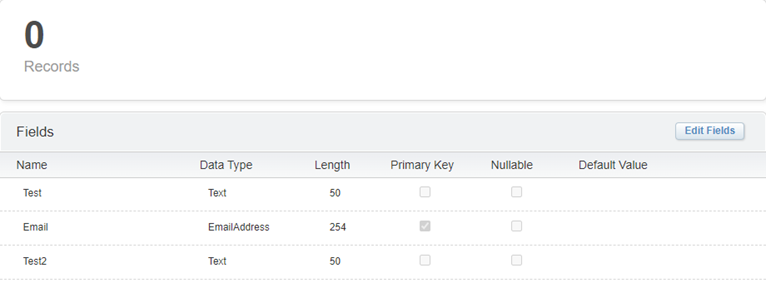
Sharing Data Across Business Units
Salesforce Marketing Cloud is a powerful platform that enables marketers to create, manage, and execute campaigns across multiple channels.
As industries forever evolve, it has become imperative for organizations to stay agile and not fragile.
Growth, expansion, restructuring, and so many other factors often create the need for organizations to share data across various business units.
Today I invite you to join me as we explore the data-sharing capabilities SFMC offers and ways to counter the potential challenges that often come with sharing data.
But first, we need to understand the key data elements of SFMC, including how large organizations operate through business units and how they store their data.
Part 1: The What
Business Units
Many enterprise organizations, especially those with many brands under one umbrella, will operate with multiple business units under a parent account. Each is a separate Marketing Cloud environment with its own set of assets, users, and data.
By default, each business unit operates in a silo and cannot access data or assets from other business units.

Data Extensions
A data extension is a table-like structure used for data storage within SFMC. Unlike a static list, data extensions offer the ability to create more personalized and constantly updating data to suit organizational requirements.
You can use data extensions to store different data types, such as text-, number-, and date-based records; boolean (true/false statements), email addresses, and more. This data is used to create accurate and relevant marketing campaigns that target a subscriber base.

Audiences
Audiences are groups of subscribers (Contacts) used during campaigns. Audiences in SFMC can be created by combining various data sources such as customer purchase history, customer engagement, and demographic information.
Data gathered on audiences can be used to personalize communications. For example, targeting subscribers in a certain country with localized offers will drive better engagement rates than general mass marketing.

Publication List
A Publication list is a list of contacts/subscribers who have opted in to receive specific communication from your organization, such as a Monthly Newsletter. Amid tight GDPR regulations, maintaining robust publication lists becomes essential to today’s marketing teams reliant on explicit subscriber consent.

Part 2: The How
Now let’s look at the various ways to share data within SFMC.
Shared Data Extensions
Shared data extensions can be created in one business unit and shared with other business units. This allows for quick, painless sharing of data across various business units.
Shared Audiences
An audience can be created in one business unit and shared across others, enabling all business units to target the same contacts.
Shared Data Sources
Data sources are external applications or databases which can be connected to SFMC. For example, addingSalesforce CRM as a data source connects that data to all Marketing Cloud business units.
Shared Publication List
A shared publication list can be accessed and used by multiple business units or accounts within your organization.
Part 3: The Why: Best Practices for Sharing Data Across Business Units
When planning your data strategy, carefully map what data needs to be shared, with whom, and how this will be shared. Consider the following.
- Shared Data Extensions: While these are powerful means of sharing record data, sharing data extensions across business units require proper management. Primary items to consider would be:
- Naming Conventions – Create a naming standard which can be used across all business units. This makes it easier for teams to search for and quickly find requested data.
- Data Structure – Utilize a data blueprint which can be shared with all relevant stakeholders. Mapping out nested data ensures ease-of-access for both marketers and admins.
- Data Map – Have admins determine how mapped data fields and objects with relationships can be used for segmentation at each business unit.
- Sharing Permissions: SFMC allows you to define granular permissions for sharing data across business units. Define roles and permissions carefully and ensure that users only have access to the data they need. This prevents errors from inexperienced users and protects customer data from improper use.
- Shared Audiences: Sharing audiences across business units allows for quick data share but does need alignment with Marketing/Campaign strategies. This requires management to ensure that audience data is utilized correctly. For example, if we have an audience that all business units share and market to, then without a group strategy, this audience may get flooded with communication.
- Monitor your Sharing Strategy: Monitor your data sharing across all business units to ensure users adhere to your sharing strategy. A few key points for a monitoring strategy:
- Users should only have access to the data they need.
- Campaign/Marketing Strategies should be aligned to ensure that contacts are not oversaturated.
- Maintain a data blueprint and ensure your landscape is mapped.
- Frequently review your user permissions and sharing rules.
- Sharing Frequency: Data sharing can occur on four primary frequencies:
- Real-time – data is synced as soon as an update occurs.
- Daily – data is synced once a day.
- Weekly – data is synced once a week.
- Monthly – data is synced once a month.
As part of your sharing strategy, it is imperative to align your shared data to the correct frequency, e.g., we do not need to update a data extension on a real time basis if it only receives data once a week.
Ensure that your frequency caters for the needs of your organization and is aligned with the type of data you are sharing.
Conclusion
Sharing data across business units offers a powerful way to streamline marketing, increase efficiency, and ensure users have access to the data they need.It is, however, extremely necessary to ensure that you have a proper sharing strategy, and that sensitive information is fully protected.

Jay Slinger
Jay is a Technical Architect with over two decades of industry experience. He has worked with several fortune 500 companies and spearheaded many multi-million projects.










